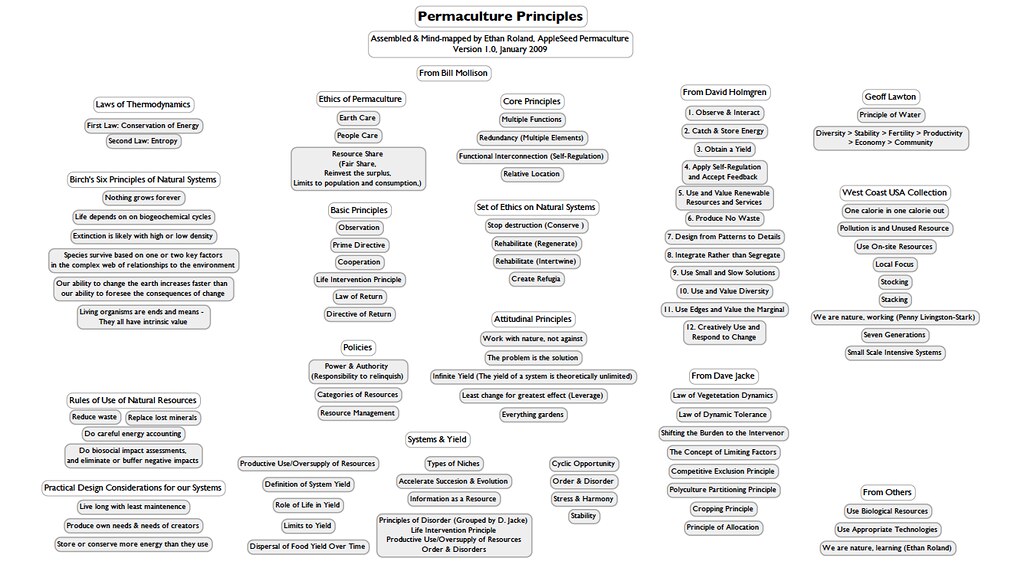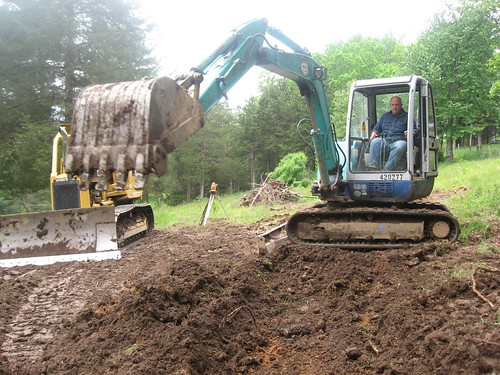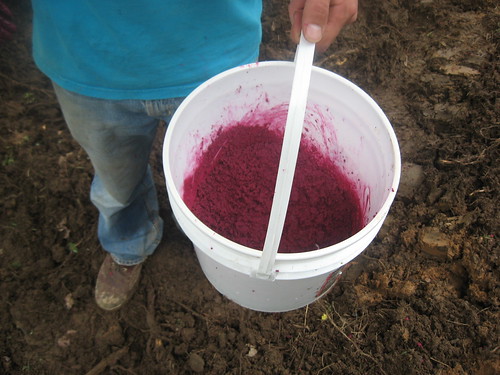AppleSeed Permaculture was featured alongside gardening guru Lee Reich in a recent issue of the locally-focused Chronogram magazine. Here’s an excerpt from the article:
Not-So-Strange Fruit
Ethan Roland teaches and practices permaculture at the Epworth Center in High Falls. His goal is “to establish local food security and deliciousness in a time of dramatic change.†He talks about each separate polyculture planting as a metaphor for the movement as a whole; as they grow and spread outward, he will mow less and less space between them until they connect to form a complete fabric.
[Lee Reich, Ethan Roland] …and other experts provide advice, classes, and assistance in making some positive changes to the flora around our homes and doing it in a way that works for us. We don’t all need to become self-sufficient overnight. But if we make choices that gently move us in that direction, relying less on imports, spending more time (and less money) connecting with our food—and enjoying luscious fruit along the way—we can spend less, eat better, and have enviable yards. What’s not to like?
You can read the whole thing over at the Chronogram website: www.chronogram.com
RESOURCES
Lee Reich www.leereich.blogspot.com
Ethan Roland www.appleseedpermaculture.com
Green Phoenix Permaculture www.green-phoenix.org
Catskill Native Nursery www.catskillnativenursery.com
Ethan Roland’s Top 5 DIY Permaculture Books
1. Gaia’s Garden by Toby Hemenway (2009, Chelsea Green)
2. Edible Forest Gardens, Volumes I and II by Dave Jacke and Eric Toensmeier (2005, Chelsea Green)
3. Food Not Lawns by Heather Coburn Flores (2006, Chelsea Green)
4. Landscaping with Fruit by Lee Reich (2009, Storey Publishing)
5. Sustainable Landscaping for Dummies by Owen Dell (2009, For Dummies Press)
Ethan Rolands’s Top 5 Regional Permaculture Nurseries
1. Catskill Native Nursery, Kerhonkson
2. MiCosta Nurseries, Columbia County
3. St. Lawrence Nurseries, Potsdam
4. Tripplebrook Farm, Southampton, Massachusetts
5. Oikos Tree Crops, Michigan
















